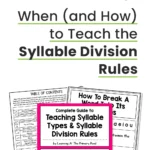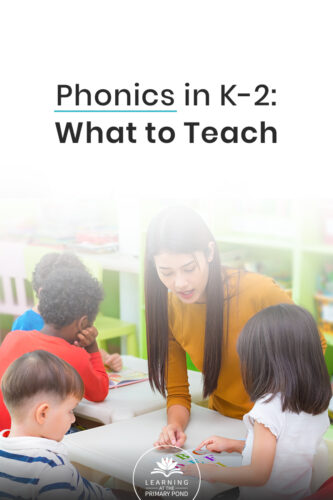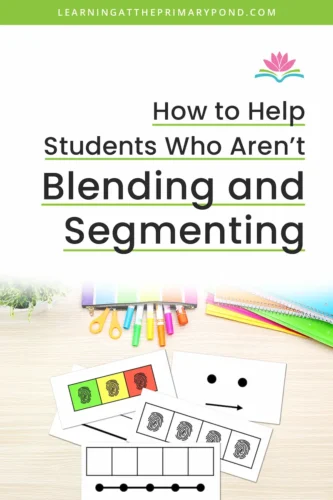When students stumble through or misread multisyllabic words, this can negatively impact their comprehension. And comprehension is really the entire reason we read! This is why it’s so important to devote time to teaching the syllable division rules, plus concepts like open syllables and closed syllables! However, even with explicit instruction on these concepts, students might still struggle. And it’s often because of a mistake that teachers accidentally make when teaching multisyllabic words.
In this blog, I’m going to talk about this mistake and how to avoid it. It’s an easy mistake to fix, but if you don’t fix it, it can impact your students’ abilities to read multisyllabic words in texts. (All of the resources you’ll see in this post are from my “Complete Guide to Teaching Syllable Types & Syllable Division Rules.”)
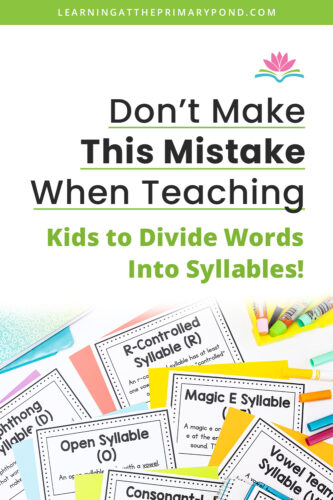
What Do Students Need to Know About Multisyllabic Words?
If you have students who are reading multisyllabic words, you may notice they’re making errors like:
- missing parts of the word
- stumbling through the middle of the word
- not reading the ending of the word
If students learn how to break up words into syllables, however, this can help students tackle these really long words. Having a process to break apart words also helps students spell multisyllabic words.
In order to break up words into syllables, kids need to know a couple of things:
- The syllable division rules
- The different syllable types (especially open vs. closed)
NOTE: Here are a few more blogs you can take a peek at that go way more in-depth about this process, as well as what all the syllable types are!
How to Teach Students to Divide Words into Syllables
The 6 (or 7) Syllable Types: What They Are, Why They Matter, And When To Teach Them!
When students see a multisyllabic word that they don’t recognize, they don’t need to try to tackle the whole word all at once. It’s usually more “doable” for them to break apart the word into its syllables, read each syllable separately, and then read the whole word.
Let’s look at an example with the word “jumbo.” This word is on the shorter end, but it’s still a multisyllabic word. In fact, with a word this short, sometimes students wouldn’t even need to break it apart to successfully read it. But let’s use it as an example because it helps for the purposes of this blog.
This particular word “jumbo” follows a “VCCV” pattern – vowel, consonant, consonant, vowel.
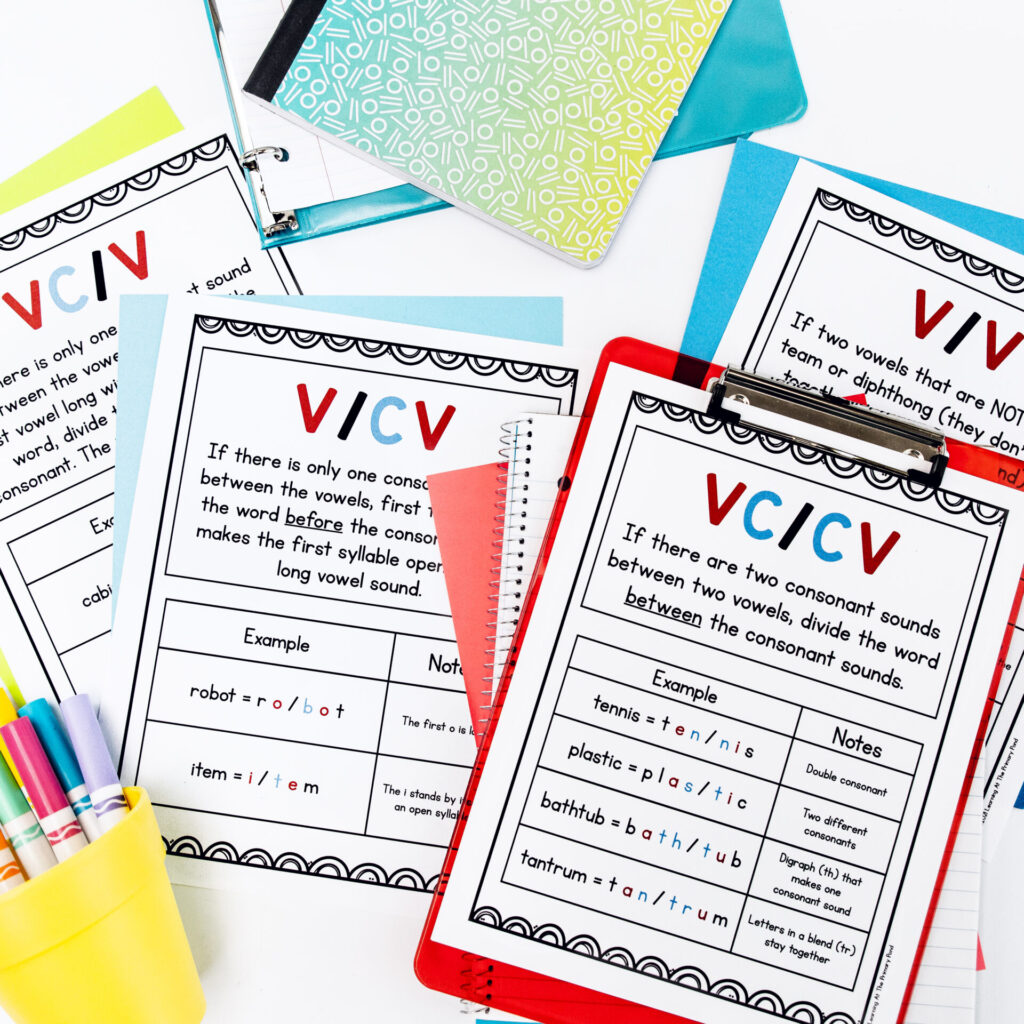
For the word “jumbo” –
- Circle the vowels (“u” and “o”). Label them with a “V.”
- Underline the consonants in between the vowels (“m” and “b”). Label them with a “C.”
- The VCCV rule tells us that we can divide up the word between the two consonants. Make a slash between the consonants.
- Code the syllables. “jum” is a closed syllable because it has one vowel and ends in a consonant. Write “CL” for “closed” above that syllable. “bo” is an open syllable because it ends with a vowel. Write “O” for “open” above that syllable.
- Read each syllable. When there’s a closed syllable, typically the vowel is short, so the “u” makes a short vowel sound. When the syllable is open, typically the vowel is long, so the “o” makes a long vowel sound.
- Last, I’d have them pronounce the entire word by putting the syllables together – “jumbo.”

Note that sometimes the syllable division on paper does not match the way you’d segment or clap the syllables out loud. The oral pronunciation and written division of a word can be different from each other.
Dividing up multisyllabic words like this really helps with the vowel sounds. Knowing about syllable division and types of syllables helps students figure out if a vowel is long or short.
This knowledge also helps students with blending. Because multisyllabic words usually have many letters, it’s difficult for students to hold all the individual sounds in working memory as they sound out and blend. However, when students break up a word into its syllables, they can sound out and blend each syllable, one at a time. Therefore, they’re working with fewer sounds (as opposed to working with all sounds in the word at once). This makes it more likely that they will successfully sound out the word.
If you feel a little lost when it comes to teaching syllable division or syllable types, that’s totally understandable! I didn’t learn this in my undergraduate program or my Masters Degree program. I actually had to seek out additional training.
If you want to improve your knowledge in this area, take a look at my “Complete Guide to Teaching Syllable Types & Syllable Division Rules.”
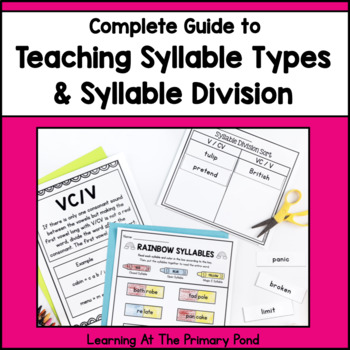
It gives you all the tools you need to not only teach yourself but also teach your kids about syllables! Lessons, posters, and activities are all included in this product.
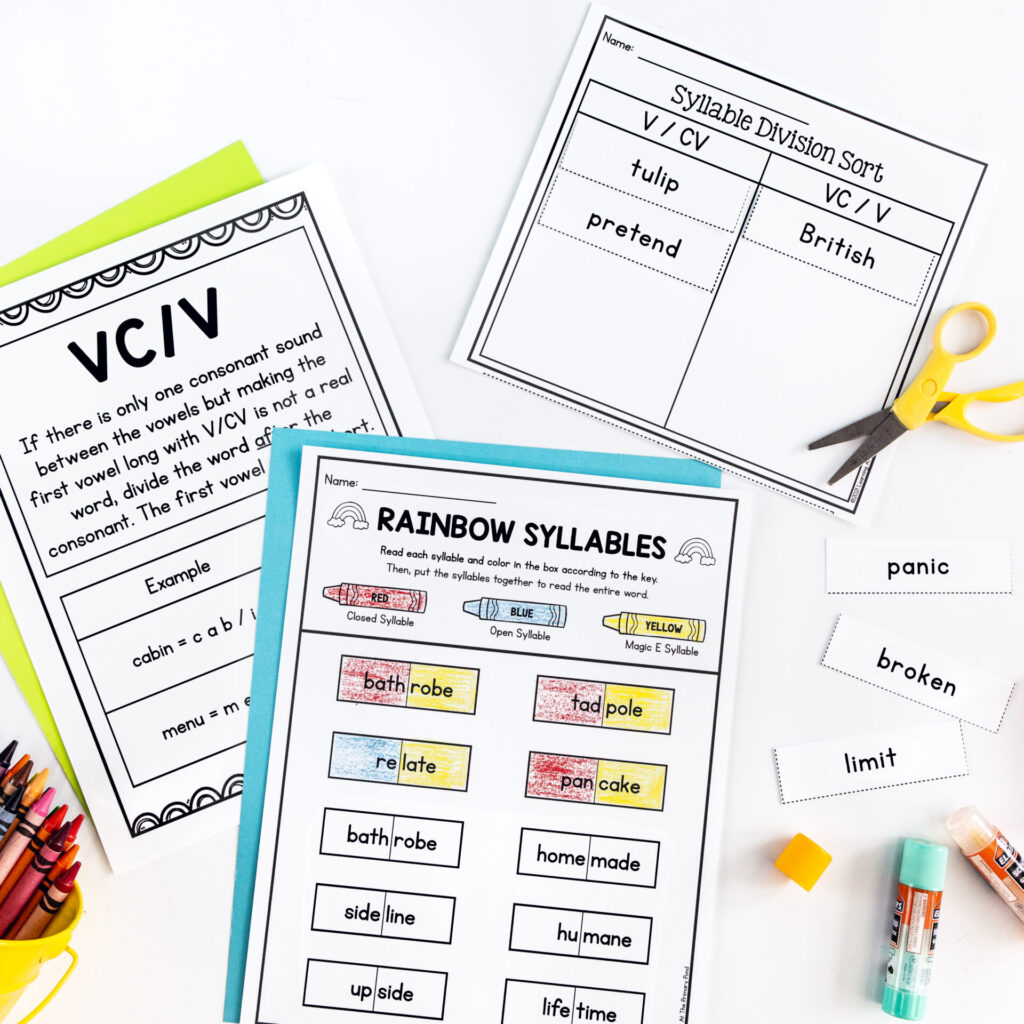
What is the Biggest Mistake Made When Teaching Students to Read Multisyllabic Words?
Now let’s talk about the mistake that can end up hurting students’ abilities to read multisyllabic words.
The biggest mistake (and it’s easy to make!) is that sometimes teachers lose sight of the BIG picture. Sometimes we get too caught up in the syllable division, syllable types, labeling, etc. It can get really technical! To avoid this mistake, always keep your goal in mind: for students to be able to read and spell multisyllabic words.
Let’s say a student is trying to read a word, or maybe you have a word you want them to divide into syllables, and it’s just not quite working. The word doesn’t seem to be following the usual syllable division rules.
At this point, you have two options.
1 – You could have students set aside the word. You can go do more research on syllable types, or ask someone about the syllable division, and then come back to the word another day. (This is what many teachers do.)
2 – You could teach students to be flexible. You have them divide the word the best they can (even if the division might not technically “be correct”) and attempt to read the word.
While doing research or learning more is never a bad thing, if you go with Option #1, you’re teaching students that if their syllable division process doesn’t work for a word, they should just abandon it. However, when students are reading, we want them to do their best to figure out a word, not abandon it!
Option #2 is the best choice because decoding new words requires students to be flexible. Sometimes a vowel doesn’t have the sound they thought it would. Sometimes the syllable division doesn’t “work” quite as you’d expect. There are some inconsistencies in our language, so the best thing you can do to help your students is to model flexibility.
For example, you might say:
“Hmmm..this word isn’t following the syllable rules I know. But I can still do my best to divide it up, even if it’s not perfect. I see that this word has two vowels, and so I know it’s going to have two syllables. I’m going to divide it somewhere in the middle between these two vowel parts. I’ll try and read it and do the best I can to figure it out.”
Syllable types and division rules are very helpful to teach, but there’s definitely some gray area. The best thing you can do for your students is to teach them to be flexible and to model being okay with not knowing all the answers.
Another way that some teachers lose sight of the big picture is that they end up spending too much time on syllable division.
I recommend spending a few minutes each week working on breaking apart multisyllabic words, labeling syllable types, etc. But the majority of instructional time should be spent reading these words in the context of actual text.
Conclusion
To sum it all up, here are some to-dos:
- Teach students the syllable rules and syllable types.
- Help students make the connection between breaking apart words in isolation and in the context of text. Do this by modeling how to read multisyllabic words in text. (“Well, I can’t write in this book, but I’m going to look for the vowel sounds, divide it up, and then try to read it.”)
- Model flexibility for your students when it comes to reading and dividing multisyllabic words.
- Don’t spend tons and tons of instructional time on the technical language each day/week when it comes to syllables.
- Keep the big picture and goal in mind – reading multisyllabic words in context!
As I mentioned, if you’d like some additional training on this, check out my “Complete Guide to Teaching Syllable Types & Syllable Division Rules.”
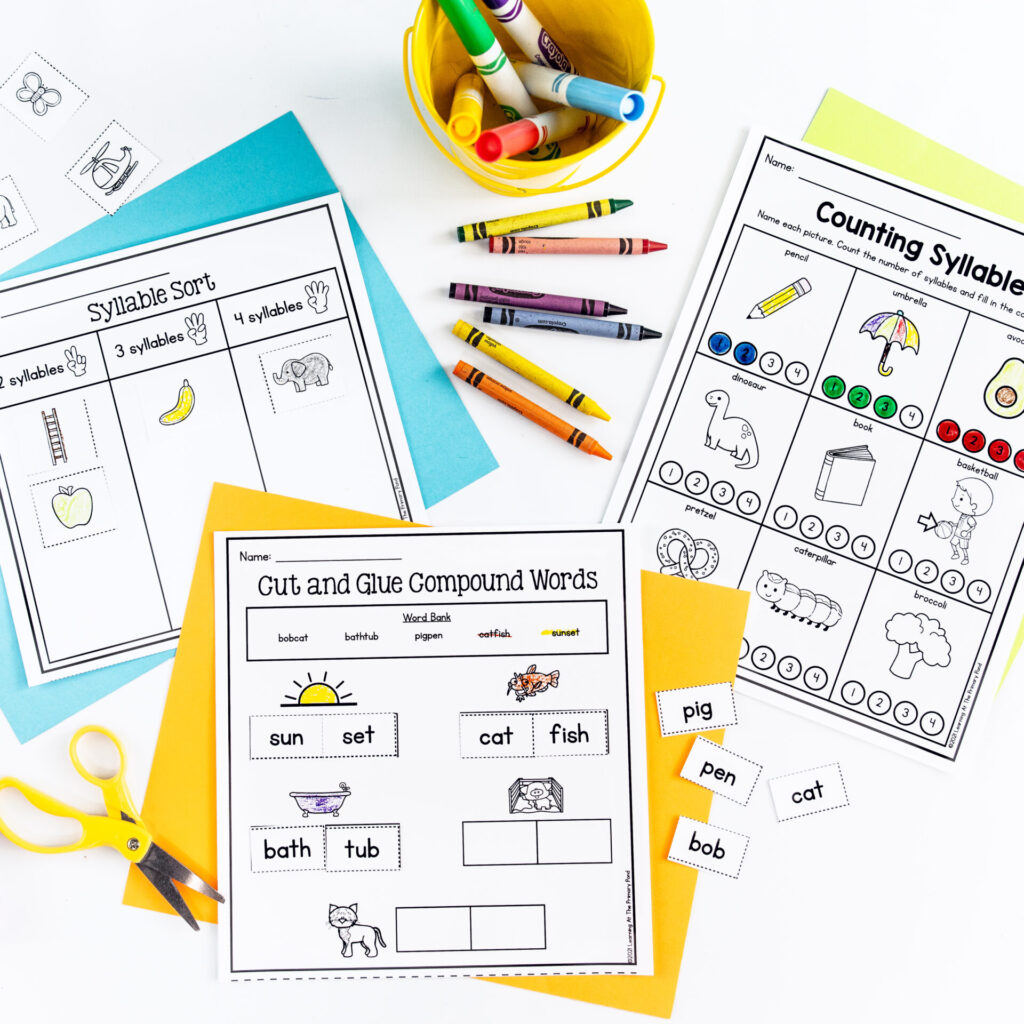
Happy teaching!


